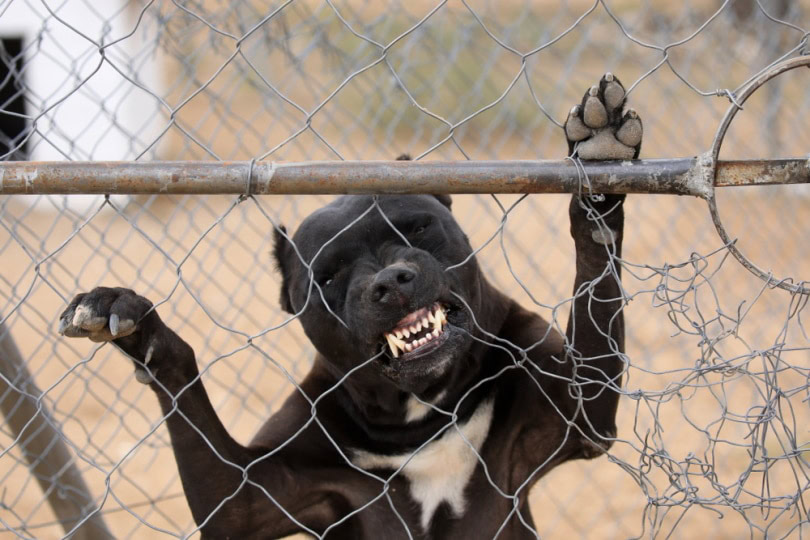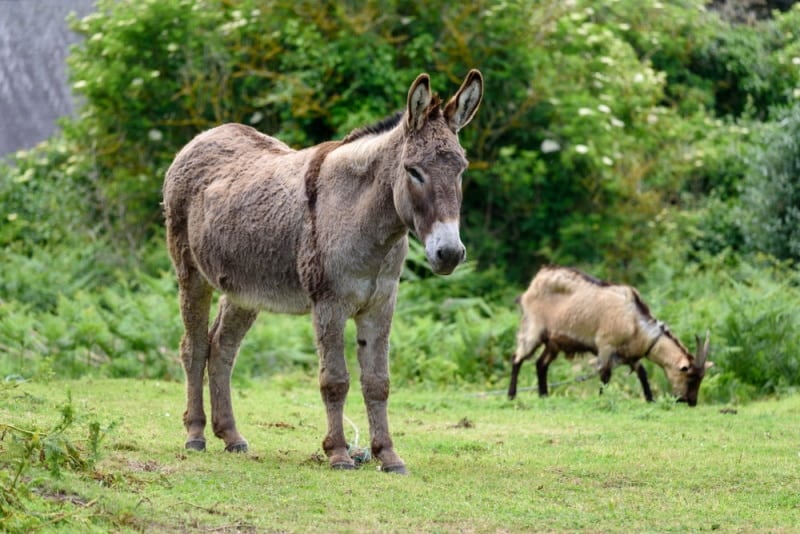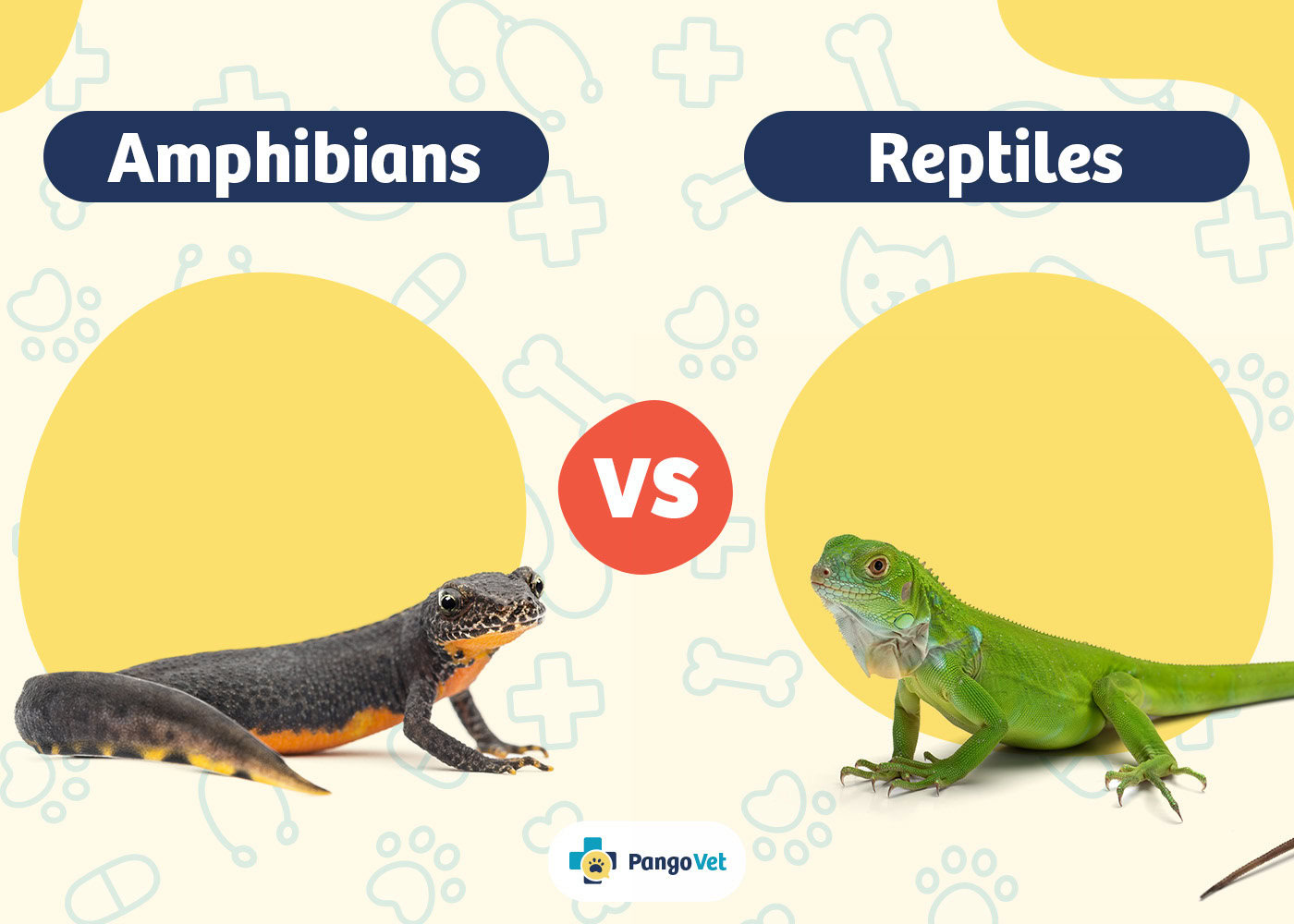VET APPROVED

The information is current and up-to-date in accordance with the latest veterinarian research.
Learn more »Click to Skip Ahead
Pit Bulls often have a reputation for being aggressive or prone to fighting with other dogs. However, the truth is that Pit Bulls can be the most loving and affectionate family companions. And they can get along really well with people, dogs, and other animals. This negative stigma largely stems from their historical use in dog fighting and their association with irresponsible owners who trained them for aggression.
That said, a dog’s behavior is shaped more by the training they’ve received and the environment in which they’ve been raised than by the breed itself. In most cases, the aggressiveness of Pit Bulls, like that of any other breed, is due to inadequate training, neglect, or mistreatment, rather than a trait they were born with.

Pit Bull History
The first thing we should do is to clarify that Pit Bull is not a specific dog breed, but rather a way to describe some dogs that share a common ancestry and certain physical traits. Sometimes that’s what American Pit Bull Terriers are called, but there are other dog breeds that are included under the Pit Bull umbrella, such as American Staffordshire Terriers, Bull Terriers, and Staffordshire Bull Terriers. They originated in England and used to bait bulls for sport. When bull baiting was made illegal in 1835, some people turned their attention to rat baiting. Handlers pitted their dogs against one another to see which could kill the most rats in a given amount of time.
Other owners directly pitted their dogs against one another in dog fighting. The Old English Bulldog, possibly the Pit Bull’s ancestor, was a muscular, strong dog, but it wasn’t agile, and agility was required for both ratting and dog fighting. Breeders crossed the Bulldog with terrier breeds to create dogs that combined the strength of the Bulldog with the tenacity and agility of a terrier.
Pit Bulls were bred to be easy to handle by humans. Handlers did not want the dogs biting them when they weren’t fighting, so this was discouraged and effectively bred out of the dog.
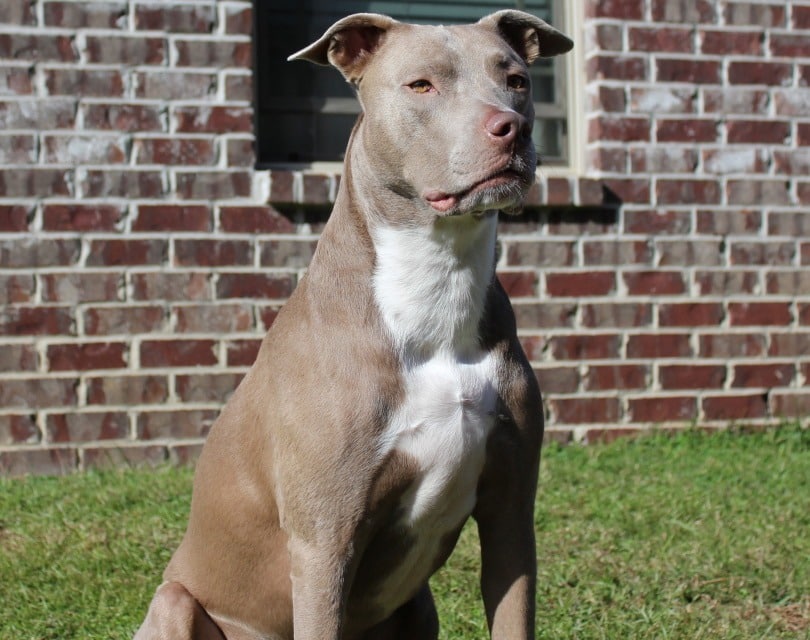
The Nation’s Sweetheart
Pit Bulls trace their origins in the U.K., and they made their way to the U.S. in the late 19th century, where they became the ancestors of the American Pit Bull Terrier. In the U.S., these dogs transitioned from their fighting origins to more benign roles. They were employed for herding large cattle, protecting the cattle from predators, and protecting their owners from thieves and animals. They were loving with their humans and even gained the nickname “nanny dogs” because they would look after the children. Additionally, during World War I and World War II, pit bull-type dogs were used in various capacities, including as mascots, symbolizing strength and loyalty.
Fall From Grace
Unfortunately, by the 1970s, dog fighting had become a problem, and U.S. Congress made changes to the Animal Welfare Act of 1966. The changes made dog fighting illegal in all states. By the 1980s, the Pit Bull had become the prized asset of illegal dog fighters. Media campaigns attempting to stop barbaric dog fights used images of Pit Bulls because they were so commonly used.
The cover of one issue of Time Magazine in 1987 included the headline “The Pit Bull: Friend and Killer,” and Sports Illustrated listed the Pit Bull as a dog to beware of.
Return To Grace
In the past few years, the Pit Bull has undergone another image change, and it is still ongoing. Advocacy groups and campaigners argue that these dogs are not dangerous and that it is irresponsible owners who lead to aggressive dogs of all breeds. Interestingly, Sports Illustrated, which helped bring down the reputation of the breed in the first place, has featured cover stories and other stories on the positive attributes of the breed.
The breed is becoming popular again, but there is still some stigma attached to them in certain circles.
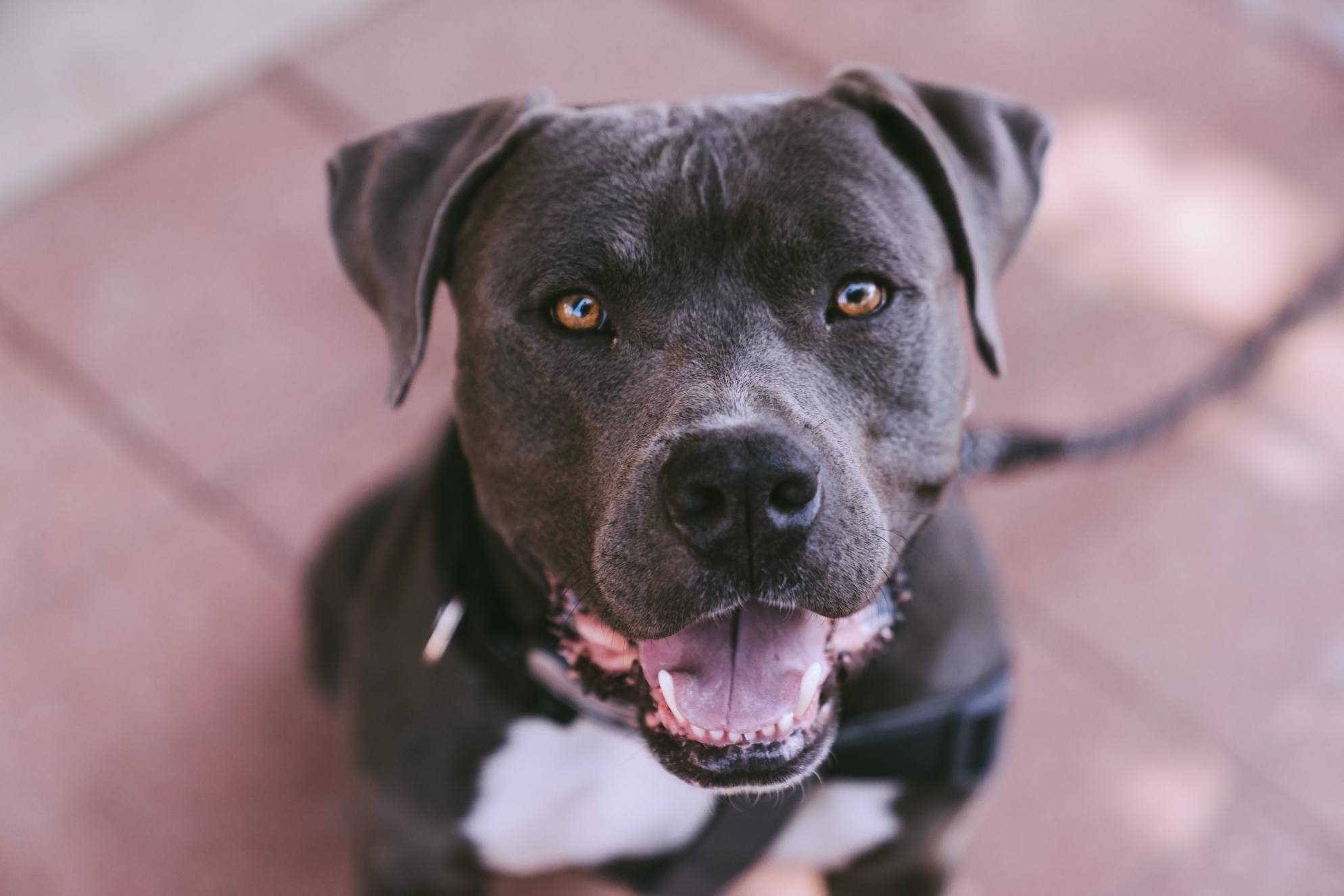
Are Pit Bulls Illegal?
As explained by the American Veterinary Medical Association (AVMA), “breed-specific legislation (BSL) targets specific breeds of dogs that are wrongly thought to all be dangerous – most frequently ‘Pit Bull types’ – and places stricter regulations on these dogs or even makes ownership of them illegal”. These laws aim to reduce dog attacks on humans and other animals by regulating certain breeds. However, organizations such as the American Society for the Prevention of Cruelty to Animals (ASPCA), the AVMA, and the U.S. Centers for Disease Control and Prevention (CDC) opposed BLS, considering it discriminatory against responsible owners and ineffective in addressing the root causes of dog aggression.
Several regions in the U.S. and Canada have BSL against certain breeds, including pit bull-type dogs. In the UK, they have been banned since 1991 following a series of incidents. Before buying or adopting a Pit Bull or pit bull-type dog, always check federal, state, and local laws, as illegally owned dogs can be seized and, in some cases, euthanized.

The 5 Tips to Prevent Pitbull Aggression
Pit Bulls can be loving, caring, and loyal members of the family, and as long as they are trained and raised properly, there is no reason that one should become aggressive. If you are interested in owning a Pit Bull, here are some tips to help ensure that yours does not become aggressive.
1. Socialization
All dogs should be socialized from a young age, and this is especially important with Pit Bull-type dogs. Attend training and puppy classes, go on regular walks, and be patient with socialization efforts.
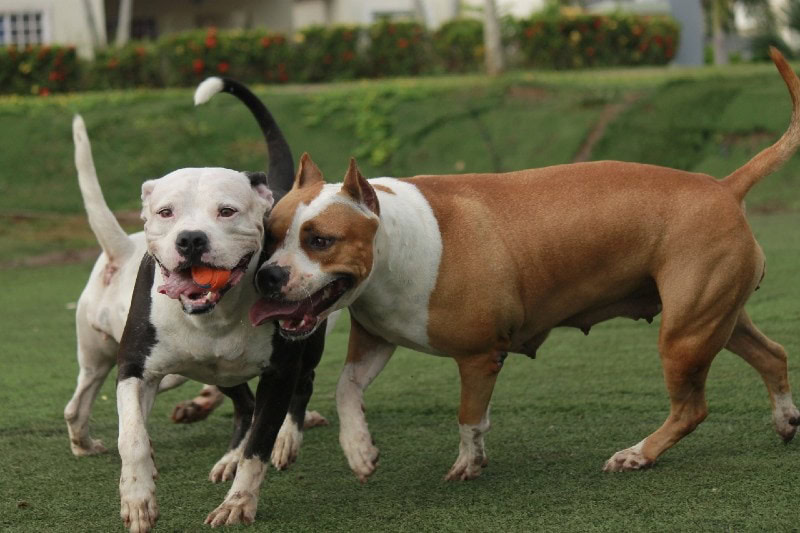
2. Training
Training is another important element of dog ownership. Most problem dogs are untrained, so ensure that you enroll yourself and your dog in puppy classes and continue with training throughout their lives.
3. Exercise
Pit Bulls have a lot of energy, and they need an outlet for this energy. Under-exercised dogs can become bored and show inappropriate behavior. Take yours on at least two walks a day, for a total of 60 to 90 minutes, and consider taking part in canine sports or agility classes to help burn off energy and provide mental stimulation for your dog.
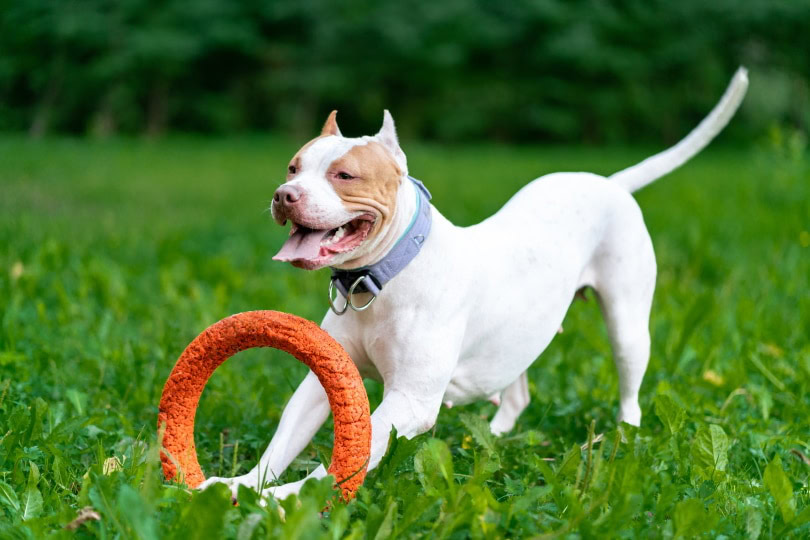
4. Prevent Dominance
While we all want our dogs to be part of the family, this still means following certain rules. By setting ground rules and ensuring that your dog always follows them, you can prevent them from becoming the dominant party in the house. Dominance from your dog is not only bad for you, but it can lead to anxiety and depression in the dog, too, because they take on a lot of responsibility.
5. Good Nutrition
Poor health and poor nutrition can lead to aggression and behavior problems in some dogs. Ensure your Pit Bull has a balanced diet that meets all of its nutritional requirements, go for regular vet checkups, and avoid over-feeding because Pit Bulls can be prone to putting on excessive weight.
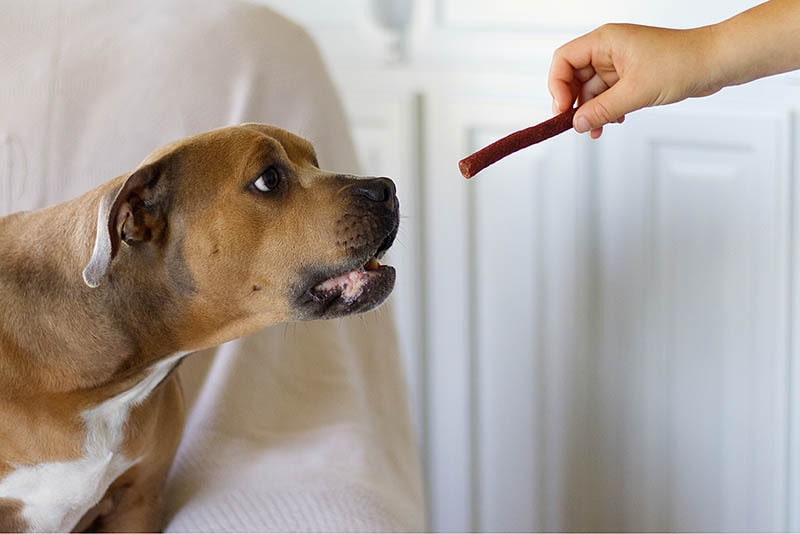

Conclusion
Pit Bulls can make one of the most loving and loyal members of the family, and if well socialized and trained, can be a friend to all. Unfortunately, the Pit Bull breeds did get a bad reputation, especially during the latter half of the 20th Century, but groups and owners are putting a lot of work into turning this reputation around.
Featured Image Credit: Beate Wolter, Shutterstock
